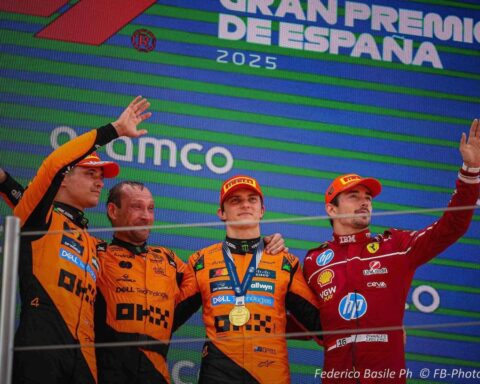Few stories in motorsport are as unconventional—and inspiring—as that of Jann Mardenborough.
Jann Mardenborough’s name has become synonymous with the convergence of virtual and real-world motorsport. A true pioneer in this respect, Mardenborough rose to fame in an unconventional way, entering the racing world via the GT Academy, a competition designed to bridge the gap between online gamers and professional drivers. The success of the program changed his life—and the lives of many gamers who would follow in his footsteps.

Mardenborough’s career began in the world of PlayStation’s Gran Turismo, where he demonstrated unparalleled skill on the virtual track. In 2011, after months of grueling competition, he won the prestigious GT Academy and secured a seat as a professional driver with Nissan. This breakthrough moment marked the beginning of what would become an incredible motorsport career. Since then, Mardenborough has competed in an array of prestigious events and series, including British GT, Formula Three, and GP3, and has even taken on the legendary 24 Hours of Le Mans with a podium finish in LMP2 in 2013. He also has competed in Super Formula and Super GT 500 in Japan between 2016 and 2020.
Yet, perhaps one of his most exciting career moments came when he was invited to race a Toyota TOM’S 86C, a historic Group C car from the mid-1980s. The Group C era remains one of the most iconic in motorsport history, with manufacturers pushing the boundaries of speed, power, and engineering innovation. For Mardenborough, who has raced everything from cutting-edge GT3 cars to single-seaters, taking on a car from an era of raw, unrefined motorsport was an incredible opportunity.
As we watched Mardenborough in action, it was clear that the challenge was not just about driving a powerful race car. It was about embracing the history of motorsport—something he’s come to appreciate deeply in his racing career.




We sat down with Jann Mardenborough to discuss his experience behind the wheel of the Toyota TOM’S 86C, his thoughts on modern motorsport, and how his unique career has shaped his approach to racing.
Atanaria:
How do you feel about being here and racing in a contest like this one?
Jann Mardenborough:
It’s my second Masters race event, and I’m really happy to be here. I get to race a car from my favorite era—the Group C era. I’ve always loved these cars, and it’s especially cool to be driving a Toyota, even though I previously raced for a rival Japanese manufacturer. The car has lots of power, and honestly, I’m surprised—in a good way—by the number of spectators. It shows there’s still a strong passion for historic racing. I think people are yearning for something more pure, loud, and real in motorsports, which is fantastic.
Atanaria:
There’s definitely a lot of passion out here. Can you tell us more about the car you’re driving and the kind of work that’s gone into it?
Jann Mardenborough:
Sure. It’s a Toyota Toms 86C from 1986—a Group C car. It has a 2.1-liter, four-cylinder turbocharged engine, with an H-pattern dog-leg gearbox. The car weighs around 870 kilos without a driver—about 950 with me in it. Back in the day, these cars had around 700 horsepower, but we’re running it at about 450 now for reliability.
We’ve been dealing with overheating issues—it keeps getting too hot and enters safety mode, cutting the power. So for qualifying and today’s race, we couldn’t really push it. We’ve done some small modifications to help extract more hot air from the radiator, hoping that’ll keep the coolant temperature down enough to finish the race tomorrow.
The car itself is fairly new to the team, so we’re still learning it. Like many Japanese imports, there are challenges—even with the manual, some parts don’t behave quite the same after 40 years. It’s a learning curve, getting it back to how it was in ’86.


Atanaria:
Apart from the overheating problems, how did the race go for you today?
Jann Mardenborough:
I started the race and overtook someone at Turn 2, which felt great—especially overtaking a Nissan while driving a Toyota. Then I ended up behind Thierry Boutsen in a Lancia. I was quicker through the corners, but he had more power on the straights. For about two laps we were trading positions, and it was surreal—chasing down a legend like Boutsen, someone I’ve followed since his days in Formula One and sports cars. I don’t know him personally, but being wheel-to-wheel with someone like that was special.
Atanaria:
Incredible. What about your current team and upcoming racing events?
Jann Mardenborough:
This year I’m racing in the GT World Challenge Europe Endurance Cup with a Ford Performance Mustang GT3. It’s a five-race season. We had Round 1 at Le Castellet two weeks ago, where we finished ninth overall and in the Pro class. Round 2 is at Monza on June 1st.
In between, we’ve got the Spa 24-hour test day in May. The Mustang is a very new car, and Ford is really pushing for a strong return to European GT racing. My team, HRT, is heavily involved—they’re running six or seven Mustangs across different series like DTM and NLS. So development is ongoing. Finishing eleventh in our first outing was encouraging, and I think we’ll only get stronger as the season goes on. The car is fun to drive, sounds great, and has a lot of potential.

Atanaria:
Looking back at your career, what have been your most memorable moments and favorite tracks?
Jann Mardenborough:
The most memorable moment has to be winning GT Academy. I wouldn’t be a racing driver without it—it changed my life. Another standout was my first Formula Three win in Okayama in 2016, in wet conditions. That was unforgettable.
As for tracks, it’s a tie between Sugo in Japan and the Nürburgring Nordschleife. Both are incredible in their own ways.
Atanaria:
Fantastic. Thank you so much, Jann. It’s been a pleasure.
Jann Mardenborough:
Thank you. Appreciate it!







